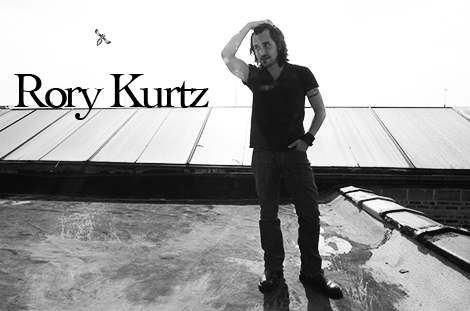
It’s seems like the last few years has become the era of the Jack of All Trades. With the internet explosion leaving us with Twitter, Facebook, blogs, and similar outlets, everyone is able to exploit their talents and at least have access to a little glimmer of the world’s spotlight. This has it’s pluses and minuses. It rewards the independent artists with a lot of talent and few resources. He or she is able to do many of the ‘big machine’ things without actual interaction with it. On the flipside, jack of all trades is followed by ‘master of none’ in the old saying for good reason. Those that juggle many things sometimes struggle to keep a grasp on them, thus producing work that may be largely seen, but not of the top quality. All this is said to introduce RH readers to Mr. Rory Kurtz a photographer and illustrator who is mastering both techniques and doing so by a dedication rarely seen and very often envied. For Kurtz, his photography and illustrating is his passion, his craft, and his life. He splits his time documenting the human experience via his camera or his canvas in his signature style of blending harsh realities and brilliant abstracts.
We talked to the Milwaukee born, Chicago transplant about his art and his approach. “There’s certainly a difference in the execution of both though,” Rory told us about his photography work vs. illustrations. “When I shoot I’m usually surrounded by handfuls of models, art directors, set dressers, fashion stylists, make up artists, etc., so I need to be vocal and sociable and keep people excited about the work and moving in a certain direction. So I have this persona of being a really energetic kind of shooter. Illustration, however, is the complete opposite of this. It’s just me, burning the midnight oil, alone in the studio. I have a bottomless pot of coffee going, and the music playing, and have the luxury of letting my mind wander while I work.”
Where his mind wanders, how he started his journey, and where it’s taken him are all up for discussion in this exclusive RH interview. Check it out below.
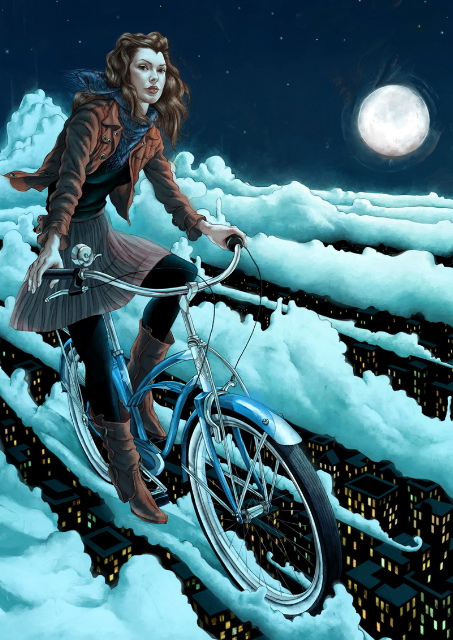
RubyHornet: There is Rory Kurtz the accomplished photographer, as well as Rory Kurtz the accomplished illustrator. Which one are we talking to today? Does your brain flow naturally between the two, or do you have to take steps to get out of one frame of mind and into another to get things done?
Rory Kurtz: Today you’re talking to the illustrator, tomorrow might be a different story. The difference in the brainstorming and ideas isn’t that large. Especially in the personal work, where I’m just as likely to shoot an idea as I am to paint it. I’m just a really visual person, and the choice in medium is more often than not merely a practical one. While my technical skills progress in each field, I’m more than capable of working fluently in either. As far as assignments go, these decisions are usually made for me by the client, and I just put on whatever hat is asked of me and get to work. There’s certainly a difference in the execution of both though. When I shoot I’m usually surrounded by handfuls of models, art directors, set dressers, fashion stylists, make up artists, etc., so I need to be vocal and sociable and keep people excited about the work and moving in a certain direction. So I have this persona of being a really energetic kind of shooter. Illustration, however, is the complete opposite of this. It’s just me, burning the midnight oil, alone in the studio. I have a bottomless pot of coffee going, and the music playing, and have the luxury of letting my mind wander while I work. It’s a more sedate process, I rarely converse with anyone while I’m working on these assignments. In fact, these days I rarely even talk to clients on the the phone, all communication is done via email from start to finish. Strangely though, there’s an enjoyable balance in the opposite of the two processes.
RubyHornet: Are you originally from Chicago? If so, how did the city (or other place you grew up) inspire your interest in photography and illustration?
Rory Kurtz: I’m a transplant here. I was born and raised in Milwaukee, Wisconsin, and moved down here just under two years ago. I couldn’t say that either city is directly influencing the work. But the arts scene in Milwaukee is really impressive given it’s size, and I’ve met terrific artists there like Sasha Kinens, James Kloiber, Mark Winter, Gabe Lanza, Gene & Bridget (Griffith) Evans at Luckystar Gallery, most of whom have worked and shown here in Chicago too, and they’ve unknowingly had a very heavy impact on my decision to work in the arts.

RubyHornet: I’ve read that your illustrations share a theme of fantasy in a modern reality. I think that theme is also interesting given that one of the things you do is shoot spaces, which also have a certain balance of definitiveness in that a space is what it is so to speak, it’s not going to move. But, these spaces are occupied by all kinds of people at all kinds of times, and when you shoot an open space, you can almost imagine any number of things happening inside of it. Have you thought about that before?
Rory Kurtz: Wow, that’s a really insightful observation. Honestly, I’ve never considered that thought before. But now that you mention it, I have to confess there’s certainly a logic in that idea. The truth is, whenever a client asks whether or not to utilize some live bodies in the shoot, I tend to advise against it. Which, I guess, is surprising for an artist who seems so preoccupied with portraiture and the human form. I’ve always seen shooting spaces as a passion completely separate from all the other photography and illustration I do. Most of the work is geared toward the hotel and resort industry, because they always have a need for that imagery and I get to travel all over the country doing it. At first it was just a little bit of side work, then it sort of evolved into a fixation. It requires a lot of technical precision in the lighting, composition, and post production, which I enjoy.
RubyHornet: You’ve been illustrating and photographing for a long time, at what point did you feel like this was what you wanted to do professionally? And was there a different point when doing so first seemed like a real possibility?
Rory Kurtz: Well, I had always been practicing illustration, but hadn’t been able to afford to go to any of the better art schools, so I sort of allowed it to become something more like a hobby while I worked a variety of odd jobs. Over time though, I kept finding ways to use that muscle again, and eventually started thinking about taking it more seriously. Then, out of the blue, one of my employers, who was also a photographer, wondered if I might be able to translate some of that skill to photography. It didn’t take long for me to get fairly obsessed with it, and even less time to see the financial possibilities. So, off I went on the challenging road of being an untrained yahoo with a camera, to being a legitimate freelance photographer. Over the years though, I kept thinking about illustration. There’s so much great work out there, being created by so many amazing artists, that I couldn’t stand hanging on the sidelines in awe. I wanted to toss my ideas in the ring too. And I found that years of shooting had given me skills and tools that made me a stronger illustrator as well.
RubyHornet: By the looks of the painting, one Mermaid is all fun and games, but being surrounded by 3, now that’s trouble…
Rory Kurtz: There’s nothing more terrifying than a beautiful woman whose genitalia has been swapped with that of a fish. I mean really, that’s f**ked up. Somehow, good ol’ Walt Disney has us thinking these murderous creatures of myth are harmless species-confused redheads with a penchant for breaking into song with salt-water bottom feeders. Don’t be fooled, if you see a gathering of these sea tarts giving you bedroom eyes, turn in the opposite direction and paddle like hell.
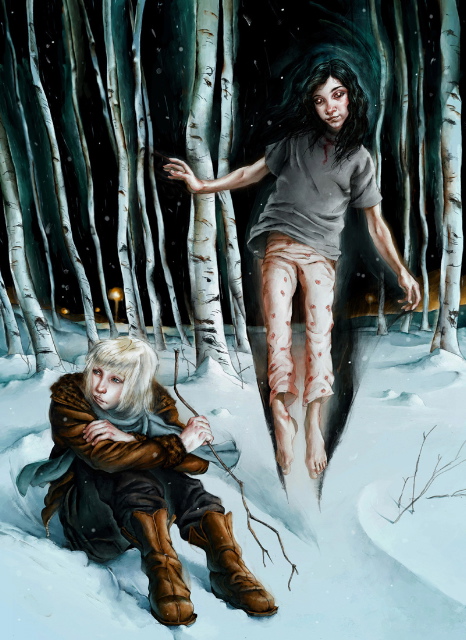
RubyHornet: In terms of the relationship between your photography and illustration work, I noticed that a lot of your illustrations focus on people, and are very portrait like. Is that a reflection of the photographer in you, or does that come from something different?
Rory Kurtz: That’s been my preoccupation since day one, in both illustration and photography. There’s no end to the interest of the human form and the level of story or conflict that an expression can convey. There’s just so much possibility in figurative study, in any medium. As subjects, or compositional elements, people are so dynamic and visually fascinating. I actually have to force myself to become more conceptual and illustrative, or else I’d spend all my time just painting one portrait after another. Which isn’t a terrible thing at all, and many great artists have made enviable careers out of it. But I’m an illustrator, and the art needs to serve the needs of the story or subject given to me, which often asks for a different approach. I’m sure a balance will come out of it sooner or later, a balance between playing to my strengths and leaving room for different elements.
RubyHornet: You contributed to Time Out Chicago’s piece on food and sex with your piece, “Bomb Pop”. What were your thoughts when Time Out approached you about contributing to the piece, and why a Bomb Pop rather than some other sort of popsicle? Is it wrong to think that the red/white/blueness of the bomb pop played a role?
Rory Kurtz: They are so very patriotic, aren’t they. It was either the bomb pop or chocolate ice cream. But along comes “Two Girls, One Cup”, and I don’t like being accused of imitation, so the popsicle won out. I could’ve worked on that piece for years, unfortunately I only had about a week. Honestly, I just liked the idea of taking something that has fond innocent connotations and turning it sexual. It’s a trick that never gets old. It just goes to show that a bomb pop, regardless of your age, can always be put to good use.
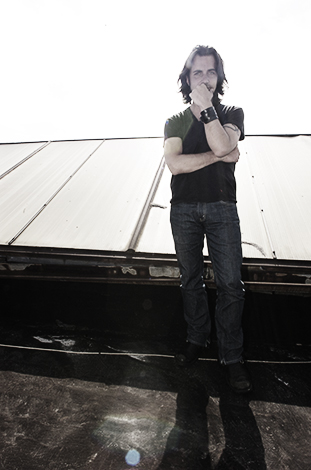
RubyHornet: What is the beginnings of a normal day for you? Are you pretty much responsible for hustling your own gigs and planning your own production schedule?
Rory Kurtz: If I’m shooting, my day starts with equipment checks, and lots of patience while hair and makeup work is performed (mostly on the models, I show up looking lovely). If it’s illustration, I pour the coffee and pull out a stack of standard copy paper and start loosely sketching and thumbnailing out ideas and work towards some inspiration. There is a fair amount of hustling involved, and a seemingly never ending amount of emails to return. You know, it’s a feast or famine type career. Sometimes the phone starts ringing and deadlines come up and I can’t get a break to save my life. Other times, it’s so quiet I could hear a pin drop, and that’s usually when I work on personal pieces, research, or do more marketing. This spring though, I signed on with Levy Creative Management out in New York to represent my illustration work, which is a blessing, and takes some of the administrative work off my hands so I can spend more time working on the creative side. Sari Levy-Schorr, who runs the agency, has a positive energy and great insights from working in the industry for years. So I feel very confident about that relationship.
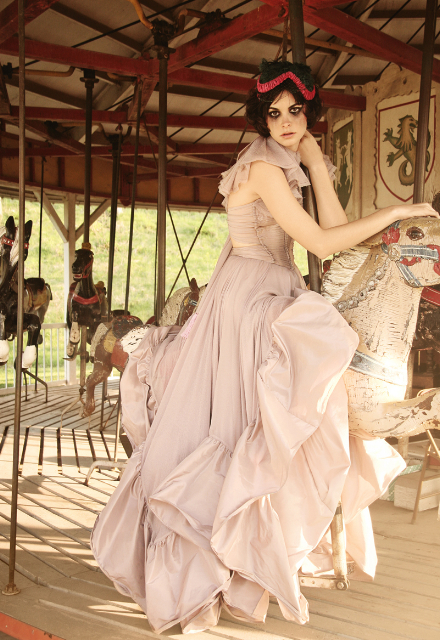
RubyHornet: Being independent, do you ever have trouble working with magazine editors, or clients in terms of coming to the same goal or direction for a piece?
Rory Kurtz: I try to be accommodating, and to be open and flexible. It’s my time, but it’s their dime, so at the end of the day, it’s their needs that have to be met. In most cases though, the clients are coming to me because they know what I do, and what to expect, so there’s little there to argue over.
RubyHornet: RubyHornet is heavy in the music scene, do you use music while you work? What might we hear if we came through your creative spaces?
Rory Kurtz: Yes, I’m almost always listening to something. In fact, if I get into a rhythm, sometimes the music is motivating the piece I’m working on and I have to keep the album on repeat until the project is finished. At the moment, I’m most often listening to The Heavy (Great Vengeance and Furious Fire), Tribe Called Quest (The Anthology), Jason Lawent (Repent), Daniel Lanois (Here is What is), & M83 (Before the Dawn).
RubyHornet: Lastly, tell our readers where they can see more of your work, or if you have any exhibits coming up.
Rory Kurtz: Well I just finished up a cover illustration for an the Annual Performing Arts Guide for Milwaukee, and I’ve got a photo editorial coming out soon in INFO magazine up there too. The websites constantly have new work going up as well as prints for purchase, so check them out every so often. Once things slow down a little bit, I’ll hopefully have some time to show personal work here in Chicago. Time will tell…
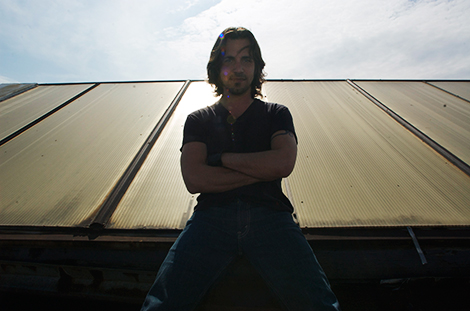
Photography By Virgil Solis
Illustrations By: Rory Kurtz
For more on Rory Kurtz please visit
